#1537 development
Explore tagged Tumblr posts
Text


first time I’ve tried changing the thumbnail of a video in hopes more people will click😅
also yes I gave Ethan a lil bit of stubble in the second thumbnail,,
youtube
#art#artists on tumblr#original character#digital art#oc art#character design#channel 1537#writers on tumblr#visual novel#1537 development#visual novel dev#dev log#indie creator#indie developer#indie vn#vn#original characters#ocs#youtube#youtuber
9 notes
·
View notes
Text

ummmmmmmmmmmmm............ stop looking at me
#channel 1537#1537 development#visual novel#indie creator#indie developer#indie vn#vn#original characters#art#ocs#artists on tumblr#original character#writers on tumblr#digital art#oc art#character design#channel 1537 malcom#malcom 1537#jackie 1537#channel 1537 jackie#marilynn 1537#channel 1537 marilynn#chris 1537#channel 1537 chris#nolan 1537#channel 1537 nolan#renpy visual novel#renpy game#indie visual novel#visual novel development
10 notes
·
View notes
Text
Me when I have to do anything for Channel 1537 (I simply won't)

#channel 1537#artists on tumblr#oc art#writers on tumblr#digital art#visual novel#vn#1537 development
13K notes
·
View notes
Text
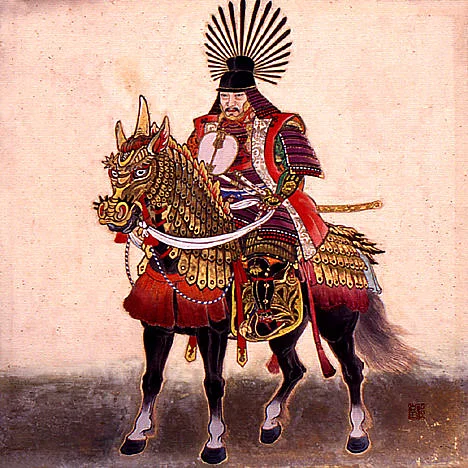

So I know I haven't been so active in the Napoleonic community in recent months, as I've been pretty absorbed with studying Japanese history and the Japanese language, but the more I've learned about Hideyoshi, the more I found myself comparing him to Napoleon, so here's a post where my two main historical interests get to intersect. :)
Toyotomi Hideyoshi has often been referred to as Japan’s Napoleon Bonaparte. Perhaps a bit Eurocentric given that Hideyoshi was born in 1537, 232 years before Napoleon--if anything it could be said that Napoleon was France’s Hideyoshi, but unfortunately Hideyoshi is not a name most Westerners recognize—otherwise it’s an excellent comparison. I’ve read a great deal about Napoleon over the past several years, and, although my studies on Sengoku Japan are only really in their infancy, I couldn’t help but notice a striking number of parallels and similarities between the lives and military/political careers of Hideyoshi and Napoleon.
Both men came from relatively humble origins and experienced meteoric rises through the ranks via their military service. Napoleon’s family on Corsica were minor nobility—they were not wealthy by any means but at least possessed enough connections to get Napoleon into a military academy; once his training was completed, he was commissioned as an artillery officer. Hideyoshi was born a peasant; his father was an ashigaru (foot soldier) who served a samurai. Hideyoshi followed in his father’s footsteps and became an ashigaru himself, which at the age of 26 brought him into the service of Lord Oda Nobunaga, who was soon the most powerful daimyo in Japan. His talents and intelligence impressed Nobunaga, and Hideyoshi rose to become one of his top generals and retainers by his early thirties. When Nobunaga was betrayed and assassinated in 1582, Hideyoshi, then 35, moved quickly to step into the ensuing power vacuum; within three years he had defeated his main rivals, consolidated his power, and become the most powerful man in Japan himself. Napoleon Bonaparte became a general at age 24 and crowned himself Emperor of the French at age 35. Hideyoshi was never Emperor, nor, being from a peasant background, did he receive the title of shogun, but he was designated kampaku (Imperial Regent) by the Emperor at age 38 and was the real power in the land from this point until his death in 1598.
As a result of their respective meteoric rises and remarkable military successes, both men came to view themselves as destined for greatness. Napoleon frequently spoke of destiny and believed himself guided by it. “Is there a man so blind,” he wrote in December of 1798, “as not to see that destiny itself guides all my operations? Is there anyone so faithless as to doubt that everything in this vast universe is bound to the empire of destiny?” (Broers, Napoleon: Soldier of Fortune, 195) This belief, which pervaded through his life, also made him take great risks, convinced that he was destined to succeed in his endeavors. Hideyoshi came to genuinely believe his own rise was divinely inspired and even developed his own backstory, giving himself celestial origins, and making sure to mention them frequently in his letters to others as a means of convincing them of the rightness of his cause. “At the time my mother conceived me,” he wrote on one occasion, “she had an auspicious dream. That night, a ray of sun filled the room as if it were noontime. All were overcome with astonishment and fright and when the diviners had gathered, they interpreted the event saying: when he reaches the prime of life, his virtue will illuminate the four seas, his authority will emanate to the myriad peoples.” (Berry, Hideyoshi, 9). He even went so far as bringing up his supposedly heavenly origins in a letter to the King of Korea, in hopes of pushing his case to the King to permit his armies safe passage through Korea so he could carry out his planned conquest of Ming China.
Both were regarded as military geniuses by their contemporaries. Napoleon’s quick, dominant successes in Italy, and his crushing victories against Austria, Russia, and Prussia between 1805-1807, solidified his reputation as one of the greatest generals in European history, and arguably the best military commander of his time. Hideyoshi never suffered a defeat in the numerous campaigns he waged over the years to complete the work of unifying Japan that had begun under Nobunaga.
Likewise, both men’s reputations for military genius were severely tarnished by campaigns driven out of an increasingly megalomaniacal drive for conquest abroad. Hideyoshi, his confidence bolstered by his string of military successes, began setting his sights on China, and even hinted in his correspondence that one day, after China had submitted as his vassal, he might even attempt to conquer India. To begin his conquest of China, he first needed to bring his armies through Korea. He attempted to negotiate with the King of Korea to gain safe passage for his armies, but Korea had strong ties to the Ming Dynasty, the negotiations soon broke down, and Hideyoshi sent his armies to invade Korea in 1592. The Japanese initially smashed through the pitiful Korean defenses and made a rapid drive up the peninsula, but with Ming reinforcements soon arriving to turn the tide, and the Japanese navy being repeatedly pummeled by the brilliant Admiral Yi Sun-Sin, the Japanese advance was soon stalled. Eventually the Japanese forces retreated to the southern coastline, where they hunkered down in hastily-built fortifications while peace negotiations dragged out for years between Hideyoshi’s court and the Ming court. When these negotiations also eventually broke down, Hideyoshi launched a second invasion of Korea, less for the sake of conquering China this time than simply for punishing Korea as much as possible for thwarting his initial plans. Hideyoshi himself never actually personally led his armies in Korea—he never went to Korea at all—but relied instead on the reports of his generals and inspectors, whose reports often downplayed or whitewashed the truth of Japanese defeats out of fear. Additionally, some of his primary commanders (like Konishi Yukinaga and Kato Kiyomasa) openly hated each other and their quarrels and personal rivalries occasionally hampered military operations, not unlike the quarrels of Napoleon’s commanders in Russia. The second invasion was turning into a stalemate when Hideyoshi abruptly died in September of 1598 at the age of 61. The remnants of the Japanese army eventually returned to Japan, and a six-year period of nearly relentless horrors and atrocities in Korea had all been for nothing. Napoleon, of course, launched his infamous 1812 invasion of Russia, which, while of much shorter duration than Hideyoshi’s war(s) in Korea, led to a much more thorough destruction of his armies and arguably contributed to his fall from power in 1814. Not that the Korean conflicts left the Toyotomi forces unscathed, and it can also be argued that the extent to which the Western armies had bled themselves out in Korea helped contribute to the victory of Hideoyoshi’s rival, Tokugawa Ieyasu, against his Toyotomi-loyalist enemies at Sekigahara in 1600, as Ieyasu, based in Japan’s eastern Kanto region, had pointedly kept his own forces out of the war.
Both men enacted sweeping reforms in their respective societies which long outlasted either them or the dynasties they both failed to leave behind. Both initiated nationwide cadastral surveys and land registries to make tax collection more accurate and efficient. In 1595, six leading daimyo under Hideyoshi drafted, on his behalf, a code comprised of fourteen brief articles, all of which were centered around keeping the peace, carrying out justice, and governing the behavior of the various social classes in Japan. Napoleon issued his civil code (also not written by himself), now known as the Napoleonic Code, in 1804. While not as brief as the Toyotomi regime’s code, it was written in the vernacular to make it more accessible to the average person.
Both were patrons of the arts; in Hideyoshi’s case, of Noh theater (which he became so passionate about he eventually even performed in plays in front of his subordinates), tea ceremonies, and painting; Napoleon also patronized painters, established art museums and, while not up to becoming a performer in his own right like Hideyoshi, he did attend the opera regularly.
Both Hideyoshi and Napoleon struggled to produce an heir. Hideyoshi’s only son, Tsurumatsu, died at the age of 2 in 1591. Hideyoshi named his nephew Hidetsugu his heir in the meantime, but hoped to have another son. Neither his wife nor his considerable number of concubines were able to give him a child, leading historians to speculate that Hideyoshi may have been sterile by this point, possible as the result of a sexually transmitted disease. In 1592 his concubine Yodo-dono, also known as Chacha, gave birth to a son, Hideyori, who would become Hideyoshi’s only heir (the unfortunate nephew, Hidetsugu, was soon charged with treason and forced to commit seppuku not long after Hideyori’s birth). Hideyoshi’s inability to create an heir with so many other women led to rumors spreading, even before he died, that Hideyori was not really his child. Napoleon also struggled to produce an heir for years after crowning himself Emperor, but, as he demonstrated no problem creating sons with his mistresses, the problem was attributed to his wife’s infertility. He divorced Josephine, married a much younger princess, and soon enough had an heir of his own.
When Hideyoshi died in 1598, his heir was only five years old; when Napoleon fell from power in 1815, his heir was four years old. Both Hideyoshi’s heir and Napoleon’s heir died at the age of 21.
#Toyotomi Hideyoshi#Napoleon Bonaparte#Napoleon#Napoleonic wars#Sengoku Jidai#history#military history#Japanese history#samurai
56 notes
·
View notes
Text

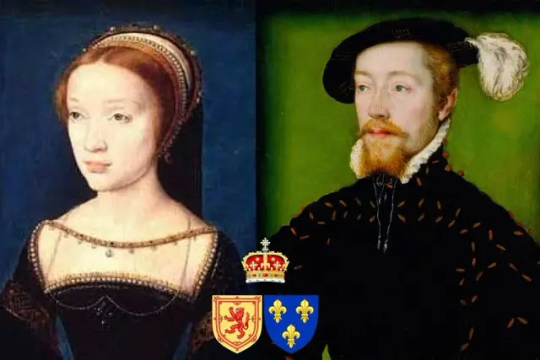
James V, King of Scots married Madeleine de Valois on January 1st 1537.
Madeleine of Valois was a French Princess who played a brief but significant role in European history as the first wife of James V of Scotland and, for a short time, the Queen of Scotland.
Madeleine’s poor health meant she died only six months after their wedding day – her short time as Consort led her to receive the nickname the ‘Summer Queen’ of Scots. Despite her short reign and tragically young death, Madeleine left both a direct and indirectly lasting impact on the tumultuous political landscape of Scotland.
Madeleine of Valois was the fifth child and third daughter of King Francis I and Claude, Duchess of Brittany.
She was born at the Château de Saint-Germain-en-Laye in France on 10 August 1520. Frail since birth, Madeleine was raised in the mild climate of the Loire Valley region to protect her from the cold.
When Madeleine was 3 years old, her mother died, and she, along with her younger sister Marguerite, was raised by their paternal aunt, Marguerite of Navarre. However, after their father remarried Eleanor of Austria, Madeleine became part of her household.
By the age of 16, Madeleine had developed tuberculosis, the same illness that likely claimed her mother’s life.
Madeleine’s marriage to James V was a result of diplomatic alliances between the Valois and Stuart dynasties.
The Treaty of Rouen, signed three years before Madeleine’s birth, aimed to strengthen the ‘Auld Alliance’ between France and Scotland after Scotland’s shattering defeat by England at the Battle of Flodden. One provision of the treaty was the marriage of a French princess to the Scottish king. King James V was only 5 years old at the time of the Treaty, thus negotiations on the marriage did not begin until 1530.
In April 1530, John Stewart, Duke of Albany, was appointed commissioner to finalise the royal marriage between James V and Madeleine – the French King Francis I’s eldest living daughter. However, due to Madeleine’s poor health, Francis proposed an alternative French bride, Mary of Bourbon, from his extended family, who was to be given a dowry as if she were the French king’s daughter.
James V agreed to marry Mary, and travelled to France in 1536 to meet her. However, upon his arrival, Mary didn’t appeal to him and instead he became enamoured with Madeleine, promptly asking her father Francis I for her hand in marriage. Initially, Francis I refused, fearing that Scotland’s climate would worsen Madeleine’s fragile health.
Smitten by 16 year old Madeleine’s delicate beauty, James V continued to press Francis I to permit the marriage. Madeleine also made her desire to marry James very obvious, thus despite his reservations, Francis I reluctantly granted them permission. The marriage contract was made at Blois, where Madeleine renounced her claims to the French throne, and Francis I provided a substantial dowry.
James V and Madeleine were married on 1 January 1537 at Notre Dane Cathedral in Paris – Madeleine was 16 and James was 30. The union was celebrated with four months of festivities, strengthening the bond between France and Scotland and fulfilling the terms of the Treaty of Rouen. Due to Madeleine’s health, their journey to Scotland was delayed until spring.
James and Madeleine eventually sailed for Scotland, arriving on 19 May 1537, yet by this time, Madeleine’s health had deteriorated further, and she was very unwell when the royal couple landed at Leith. Despite this, Madeleine is said to have kissed the ground upon arriving in her husband’s kingdom.
In preparation for her arrival, James had ordered improvements to Falkland Palace and the Chapel Royal, and was also in the process of building new tennis courts, and had added a French-style tower to the Palace of Holyrood House.
However, Madeleine fell seriously ill shortly after arriving in Scotland, possibly due to tuberculosis. She was bedridden and unable to fullfill her role as queen consort. Despite her illness, Madeleine’s presence brought a touch of French culture and refinement – known for her beauty, grace, and intelligence, Madeleine quickly became beloved by the Scottish court.
Although expressing some improvement in a letter to her father from Edinburgh on 8 June 1537, James V was concerned enough to also write to him requesting the physician Master Francisco to be sent. Madeleine later wrote that Francisco would only be needed to perfect her cure.
Plans were underway for Madeleine’s coronation as Queen of Scotland, yet her health continued to decline. A month later, she died of tuberculosis in her husband’s arms on 7 July 1537 at Holyrood Palace, aged 16 – just 6 months and 7 days after their wedding. She was interred in the Royal Chapel at Holyrood Abbey in Edinburgh, next to King James II of Scotland.
Her death left James V devastated, and plunged Scotland into mourning.
20 notes
·
View notes
Text
AITA for lying to my friend about owning a frog?
Friend- friend is dubious.
Ok, so: I (M) was painting some frogs onto the tower I share with my roommate P (20-something or 30-something?, F), when - we'll call him J (can't be older than 20, M) - walked over to me and asked if we had any frogs. I gave him a vague answer, to see what he'd say, and he seemed to think we did... and he got super excited at the concept of frogs. He even offered a lifetime supply of food for it! Now, we didn't have any, but I did know a group of wild frogs with prophetic powers (long story), and I brought him to them, kind of killed one in front of him, and gave him the grandmaster frog (1537 and 2 months, M) as a sign of peace.
However, from the moment I gave it to him, I knew he was gonna kill it. Just felt it in my bones, you know?
I confessed to P what I had done, and she scolded me, reminding me that frogs were our thing and no one else on the server was supposed to have them. I knew I had messed up, but I told her that we could always just steal it back.
The next time we saw J, not soon after actually, we threatened him and asked where he had hid the frog. He was confused, I told P he had taken it from me, he told her about the food thing, and she started asking me all sorts of questions like I was the one who did something wrong! Asking me why I didn't tell her about the food offer, asking me why I would even take that offer up because we can steal from them so easily... We then got back to threatening him about the location of the frog, and he got super cryptic about it! Saying we didn't need to know, but that the frog was safe, and that he had renamed it.
After our talk with J, P and I started looking for the frog. She was gonna act as distraction as I went through their house, but it had been burned down a bit ago (long story) and I sort of wimped out and walked up to J and his friend instead. J said I had double crossed him for some reason, and when I made an offer he said he was tired of my deals?
I went and apologized to the frogs afterwards, don't you worry. They forgave me, but I knew I would have to make things right.
Will update you guys on developments, but I just wanted to post this now because I want to know if I'm really in the wrong or not.
Edit 1: I got the perfect opportunity today, so I decided to just steal it. I had to tell the frogs first, and picked one to act as a decoy.
I did manage to save it, and I brought it back home and hid it in a wall in the basement stairwell. Next, there was only one thing left to do: ask J to let us see the frog. He was a bit apprehensive, but I reminded him that we're great friends, and he promised to think it over.
He did make up his mind and let me see the frog eventually, but it turned out to be a ploy to kidnap me in an obsidian box! P did save me, don't worry! I still can't believe he would trick me like that, though...
He did later find the frog missing, and got super mad at me, like I'd done anything wrong!
By the way, I showed P the frog, safe and sound, and she was super proud of me!
Also, people have been asking for elaboration on the stuff I've said were long stories, but... they're long stories, and this post is already getting super long. Maybe I'll elaborate someday.
#will genuinely edit this when i rewatch more of the episodes but i just don't feel like it rn#trafficaita#bigbst4tz2#limited life#limlife#liml#limlsmp#pearlescentmoon#solidaritygaming#unreality#my verdict is 'ESH. what the hell'#froga (frog saga) my beloved forever#it's such an aita post that just gets weirder with every detail
42 notes
·
View notes
Text
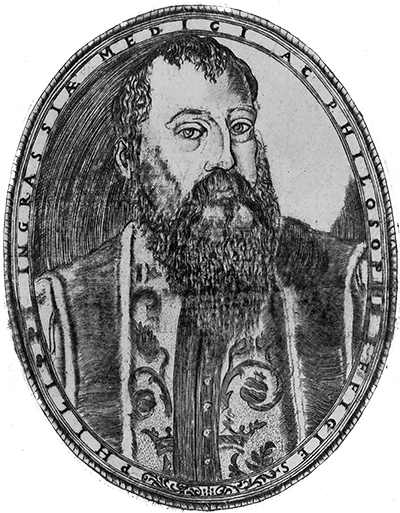
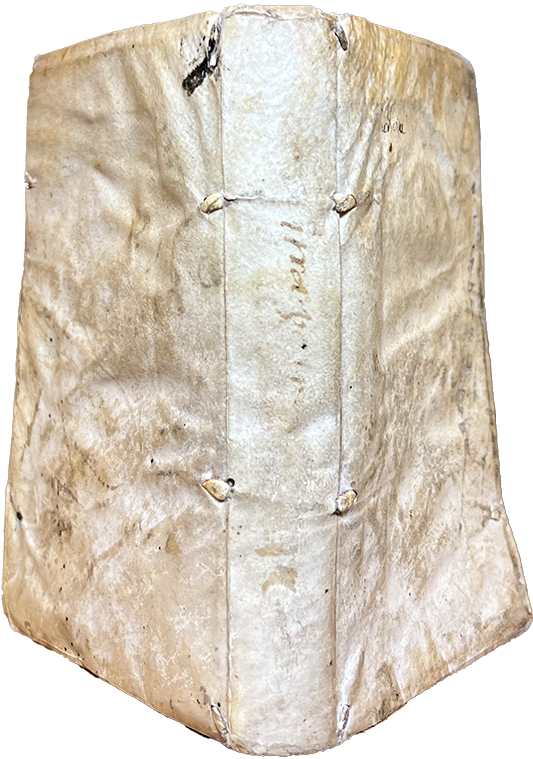


Special Guest Post from John Martin Rare Book Room
Hardin Library of Health Sciences
INGRASSIA, GIOVANNI FILIPPO (1510-1580). Iatrapologia: Quaestio, quae capitis vulneribus ac phrenitidi medicamenta conveniant [Defense of Medicine: Question regarding the medicinals convenient for head injuries and meningitis]. Printed in Venice by Giovanni Griffio, 1547. 16 cm tall.
This month's book was one of six John Martin Rare Book Room items selected to be scanned as part of the Iowa Initiative for Scientific Imaging and Conservation of Cultural Artifacts (IISICCA) project. Iatrapologia (Greek: "defense of medicine") by Giovanni Filippo Ingrassia (1510-1580) was selected for two reasons. One, with backlighting through the thin, limp vellum cover, we were able to determine it had small pieces of manuscript waste that included both green and red inks. Different inks show up at different energy levels in Computed Tomography (CT) scanners - or sometimes not at all. Finding a variety of inks helps to calibrate both types of scanners used in the project.
And two, it's just a darn cool book.
Ingrassia was an influential 16th-century Italian physician. He grew up in a well-educated family and received a classical education. He studied at the University of Padua, one of the most important western centers for the study of medicine and anatomy.
There, he learned from renowned intellectuals and physicians, such as Realdo Columbo, Bartolomeo Eustachi, Girolamo Fracastoro, and, of course, the Anatomaster® himself, Andreas Vesalius. Ingrassia would go on to make his own significant impact on not only anatomical medicine but also public health and hygiene, forensic medicine, and teratology (the study of abnormalities of physiological development).
After completing his studies in 1537, he became the personal physician to a minor Italian noble family in Palermo. Soon after, he became the professor of human anatomy at the University of Naples. It was during his time in Naples that he wrote Iatrapologia. Ostensibly a book about how to treat head wounds, it was also a critique of the current state of medicine and surgery - one of the subtitles, liber quo multa adversus barbaros medicos disputantur, translates as "a book in which many things are argued against the barbarian physicians."
In Iatrapologia and elsewhere, Ingrassia argued that medicine should be considered a less subjective discipline. Treatments should be verified, results checked, and useful diagnoses disseminated among physicians. He also thought that physicians and surgeons should be integrated into a single profession to prevent surgeries by "unqualified" people. Indeed, in Iatrapologia, he states rather dramatically,
"Oh, God, so much human suffering has been caused by the vainglory of contemporary doctors. Indeed, surgery has been abandoned to some inexperienced, empiric [i.e., quack] physicians, most of whom are not only lacking in dogma, but also in what relates to the Art." p. 252
Ingrassia was also a strong believer in continuing education, suggesting physicians should refresh their dissection skills every five years so as to avoid becoming "imperfect and ignorant physicians." If nothing else, Ingrassia demonstrated a natural skill with insults!
Ingrassia made significant contributions to the field of anatomy, particularly with bones and the skull. He is most well known for identifying a third small bone in the middle ear, which he called the "stapes." He also described differences between human and animal bones, breaking down parts of each bone to make identification easier.
Ingrassia was not only a physician and anatomist but also a pioneer in public health. He held various political positions, most notably Protomedicus (chief physician) of Sicily, and implemented measures to prevent the spread of diseases such as malaria and the plague. He emphasized the importance of preventive measures, such as isolating infected patients and cleaning objects to reduce the risk of transmission.
Overall, Giovanni Filippo Ingrassia was a remarkable physician and scientist who significantly contributed to our understanding of human anatomy and the practice of medicine.
Our copy of Iatrapologia is a delight to hold and leaf through and, as indicated, holds a few secrets inside. The limp vellum cover is soft but dried out enough that it has a bit of a rattle while opening. The cover image above shows discoloration from use and bits of writing here and there. The textblock is in excellent shape, the paper bright, and almost completely free of damage.
One interesting surprise is a piece of paper that has been pasted over the verso side of leaf A3 in an attempt to cover up a printer's error (a repeated page from elsewhere in the book). At some point, someone made a concerted effort to remove the paper to see what was underneath. Whoever glued it on, though, made sure the vandal couldn't remove much!
Other surprises can be seen in the images above. The images show close-ups of the text visible with backlighting. In one image, green and red inks are still vibrant and really jump out. The IISICCA group estimates the date of the manuscript to be roughly the 10th or 11th century and suspects the complete word is some form of "archiabbas" (chief abbot).
Another image shows a small scrap where the photo is repeated several times. Different photo filters were applied in an attempt to make the text more legible.
Contact me to take a look at this book or any others from this or past newsletters: [email protected]
#medicine#medical history#rare books#library#special collections#history#uiowa#Giovanni Filippo Ingrassia#public health
79 notes
·
View notes
Text
Traintober 2023: Day 17 - Holiday
How Sudrian Tourism has Evolved:

Sodor has changed majorly thanks to the publication of the Railway Series and the subsequent Television Series, both of which propelled the island and its railways from being just another part of the UK into a tourism juggernaut. But the fact of the matter is that Sodor did not immediately transform from being an insignificant island on the coast of Cumbria to one of the most popular tourist destinations in the United Kingdom overnight – so how did it all change?
To understand, we must go back to the 1500s, and the Protestant Reformation in England. At the time, Sodor was part of the English Crown – but far looser than its Irish and Welsh neighbours. Due to its small size, rough terrain and low population, King Henry VIII was far less interested in confiscating Catholic land on the island than its surrounding areas. This was in part due to the both Sir Geoffrey Regaby and Bishop Michael Colden, who managed to guide Sodor away from the Lincolnshire Rising and the Pilgrimage of Grace. Due to their remote location and general poverty, Thomas Cromwell never visited Sodor, and Cronk Abbey was never closed. For its part, St Luoc’s Cathedral at Suddery was ‘converted’ to a Protestant Cathedral in 1537, but continued holding Catholic mass. This was done by holding the two religious ceremonies one after the other.

As Sodor was now one of the few parts of the British Isles that had a Catholic church and direct line to the Papacy in Rome, it became an ‘underground’ tourist destination as a new British site of pilgrimage, frequented by Catholics looking to attend mass at the Suddery Cathedral. In return for continuing these ceremonies, Sudrians became more devout to the crown – in particular to Queen Elizabeth I, and by 1603 the Catholic mass had been all but forgotten. This did not end the attractiveness of Sodor as a religious destination, due to the caves of Saint Machan and several other holy sites that litter the island; the numbers were not large, but they did lead to a number of important connections, especially with Ireland, the Isle of Man and English ports.
The next phase of Sudrian tourism came in the 1860s, when the Skarloey Railway found the long-forgotten Skarloey lake and hidden hollow. Rather than explain it, I think I’ll just use the description that the Reverend Wilbert Awdry did:
“Spas were popular at the period and offered the possibility of a lucrative passenger business. Skarloey’s mineral springs and sheltered situation took hold on the minds of some members of the Board, among them Shamus Tebroc who conceived the idea of developing Skarloey as a spa. An hotel and a number of villas were built as a speculation, and the gravity worked incline which had been installed for the conveyance of materials was retained and up-graded for coals, merchandise, and passengers’ luggage.”

Skarloey became the first of the Island of Sodor’s tourist hotspots, especially due to its proximity to Culdee Fell and Saint Machan’s cave. The popularity of the spas was good for a time, but began to fall off as the bad fortunes of the Sodor & Mainland Railway continuously hurt the Skarloey Railway’s tourism campaign with delayed and cancelled trains, ratty carriages and even standoffish staff. This led to Skarloey becoming a local holiday destination instead, but even that began to slow down as WWII loomed.
On the other side of the island, the Mid Sodor Railway also began heavily advertising their railway to holidaymakers across the UK, but to a somewhat better result. The Isle of Man Steam Packet contract the railway picked up led to a large influx of tourists across the late 1800s and early 1900s, up until the 1920s. The railway’s ability to reach the walled city of Peel Godred and the cave of Saint Machan (via the Culdee Fell Railway) made it a very attractive destination for tourists, though this would change at the end of WWI.

The advent of relatively cheap international travel via ferries in the 1920s did a lot of damage to Sodor’s tourism economy, as their major markets in England preferred to travel to either the Continent or the Lake District – or even as far afield as the United States. Sodor instead switched to being primarily an agricultural and resource-extraction economy, with some manufacturing. This continued throughout WWII.
Which leads us to May 12th, 1945. The Three Railway Engines was published – in colour – in the UK. It achieved enough success to lead to the continuation of the series in 1946, and again in 1948, and then again continuously until 1972. These twenty-seven years’ worth of publicity for the island and its railways had a massive effect. Skarloey was rediscovered and the budget-conscience holiday maker of the 1960s chose it for its low prices, high quality, and picturesque scenery, turning around the railways needed to reach it. The Culdee Fell Railway also saw an uptick in traffic as the Peel Godred Railway brought in more passengers than the old Mid Sodor Railway had.

Furthermore, tourists came to see the engines, a phenomenon not seen before in the island’s tourism industry. Insignificant towns such as Dryaw, Brendam, Crosby and Glennock became infinitely more popular as the sites of incidents in the Railway Series, or as convenient locations to stay for travelling the island. The biggest success story of the island’s cities was Cronk however. Cronk grew massively from the tourism trade as the most central location on the NWR to reach the various tourist destinations of Sodor – even Awdry takes a moment to mention ‘The Crown of Sodor’ Hotel on Sigmund Street due to its prominence as a hotel on the island.
This large influx of tourists was however of a majorly local source – the UK, parts of continental Europe and a relatively low number from North America. It wasn’t until the advent of cheap international jetplane flights in the mid-1970s and the debut of the TV series on October 9, 1984.

This debut is what changed everything.
The Thomas and Friends Television series was an international success, with translations into a number of languages (eleven by Wikipedia’s count) and broadcast around the globe. This, coupled with the opening of an enlarged airport at Vicarstown (which had been constructed in 1941 by the RAF and expanded by Vickers in the 1960s. The airport itself had been bought by the NWR in 1982 (probably in anticipation of the TV series) and began receiving jetliners from across the world as early as 1986.
Today, Sudrian tourism is one of the largest income producers in northern England due to its international status crafted by the Thomas & Friends series. The island is a popular tourist attraction for both railfans and Thomas fans, as well as religious pilgrims, spa enthusiasts, hikers, ramblers and historians. The airport at Vicarstown has been linked into the NWR via a spur line, and more recently a number of signs on the island have been converted to include secondary and tertiary languages, for better interpretation.
Sodor reached its best numbers for international tourists in 2019, when over 1.5 million people visited the island, making it the third most visited tourist destination within England, beating out Birmingham. The secret to it’s recent further uptick in visitors is the opening of a number of museums, galleries and other cultural sites on the island, as well as a strong advertising campaign that focused on the island’s major tourist draws, which are:
The North Western Railway, Skarloey Railway, Culdee Fell Railway and Arlesdale Railway from the Railway Series book and subsequent Television series
A pre-Norman era Abbey at Cronk, one of the oldest of its kind in Britain
Suddery Cathedral, which continues to be one of the few remaining pre-reformation cathedrals in Britain
Several Norman-era castles, including a completely intact castle at Harwick
The Walled City of Peel Godred
The caves of Saint Machan
Culdee Fell
Henry's Forest National Park
Skarloey and its spas
Museums, galleries, and cultural centres
The Standing Stones of Killdane.

This advertising campaign brought a greater variety of tourists to the island, especially those from North America.
The island was badly affected by the advent of the Coronavirus pandemic, which saw the high tourist numbers of the previous decade prop by over eighty percent, which forced the island to once again consider restructuring their economy around agriculture, manufacturing, and resource extraction. This eventually was decided against, as tourist numbers have slowly picked back up through 2022.
Sodor has been greatly affected by its rise to one of the most prominent tourist destinations in the UK, including a number of hotels being built on the island – many of which are converted manorhouses – as well as several upgrades made to the transport systems of the island, with updated ferry services between the island’s major ports and locations in the UK and Ireland, as well as the railway building a special line to the island’s main airport, new tram and bus services within the major cities on the island. The island’s railway system has also seen upgrades throughout the latter half of the 20th century, including a third track being added to the mainline, new signalling systems and a number of extra connecting services to cities in the UK, such as Manchester, Birmingham, Carlisle and Preston.

Sodor has grown drastically as a result of its tourism industry and is today an international tourism hotspot. The island continues to be popular into the modern day, as a result of strong advertising and a pointed diversification of tourist offerings on the island to help the island’s tourism industry grow and bring in profits for the island’s people.
Back to Master Post
#fanfiction writer#weirdowithaquill#railway series#thomas the tank engine#railways#RWS analysis#Thomas and friends analysis#island of sodor#tourism#mid sodor railway#skarloey railway#traintober 2023#traintober
36 notes
·
View notes
Text
A Tale as Old As Time

When I was growing up, my mother told me that fairytales were inspired by true, real-life stories. My imagination went wild, I was ecstatic that my beloved Cinderella, Ariel, and best of all Belle truly existed. That the magical world of Disney was our reality, that everyone received their happy ever after. When I was a little older, I understood her meaning. The magic Disney incorporated into our favorite animated movies wasn’t real, but in the past there probably was a poor servant girl who fell in love with a “prince.” There are various retellings of Aladdin. If you research other cultures, there are numerous folktales of “animal brides and grooms.” Ordinary girls who fall for cursed creatures and break their spells. Sometimes in the stories, the cursed creatures themselves, the “beasts,” fall for the “beauty” and become a better person. They were tales as old as time.


Several years ago, I was watching an episode of “Mysteries at the Museum,” featuring a segment with a portrait of a man and woman from the Renaissance period. The striking couple was dressed eloquently as nobles, but the man’s appearance had a unique characteristic: his face and body were covered in long hair. The host introduced the man as Petrus Gonsalvus, who was known throughout Europe as the “man of the woods.” On hearing Petrus and his wife Catherine, the lady featured in the portrait, perhaps inspired one of our most beautiful fairytales, my heart skipped a beat. Could it be? My Belle and Beast?!?!?! I was transfixed by the program, finding it bittersweet.
Born on the Canary Islands in 1537, Petrus suffered from what was then known as “Werewolf Syndrome.” It is now known as hypertrichosis. A genetic disorder, in the days of Renaissance, the child was viewed as a beast. When he was ten years old, Petrus was sold (possibly by his own parents) and brought to the French king, Henry II, and was gifted to the royal. Believed to be a talking monkey, for a time, he was kept in a cage and fed raw meat and animal feed…Until the king realized Petrus was intelligent. This could be an experiment, to turn a beast into a man! Petrus grew into a man, polished and articulate, educated, and he possessed a gentle soul. The court appreciated his talents, but continued to look upon him as a beast and a social attraction for their amusement.
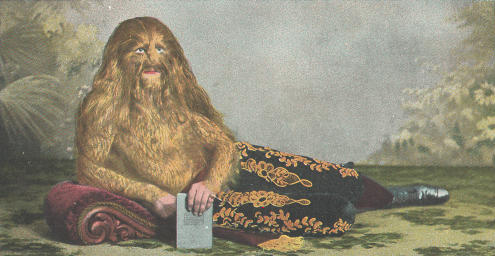
When King Henry II died, his wife Queen Catherine de Medici – a woman infamous for her cruelty and coldness – inherited Petrus and decided that it was time for Petrus to marry and to have children. The idea was to produce further “beasts” for the court. In keeping with tradition amongst nobility, a marriage was arranged. The bride-to-be was named Catherine Raffelin and little is known about her except her rare beauty, and that she didn’t meet Petrus until the wedding day. Rumor had it, on their wedding night, Catherine fainted from fear. Catherine eventually overcame her terror when she discovered Petrus was a gentle soul, and a friendship developed between the two.
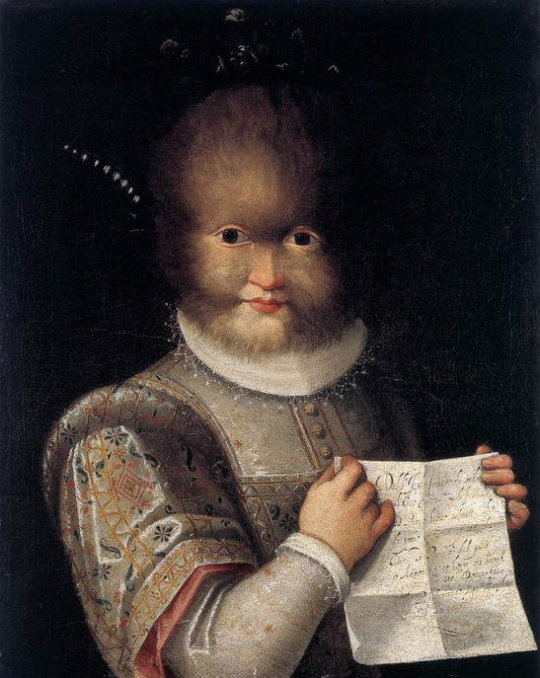
The couple was considered an oddity at court, but the queen was pleased when Petrus and Catherine had children, and four of their children had hypertrichosis. After the death of Queen Catherine de Medici, Petrus and Catherine and their children were shunned by the French court and traveled through Europe, presenting themselves as entertainment for various kingdoms. Petrus and Catherine’s children who were deemed “beasts” were taken from their parents and given to other royals as pets. Throughout the years, through all of the trials and tribulations, Petrus and Catherine remained together, side by side. They finally made their home in Italy, and the last mention of Petrus was in 1617, when he attended his grandchild’s christening. It is believed he died in 1618, and was denied a Christian burial since he was still not considered human. Catherine’s death is acknowledged to be in 1623. Their graves’ location is unknown.
Petrus and Catherine themselves are largely forgotten by contemporary audiences, but they left a lasting impression on the world. In the 18th century, two versions of the French fairytale, Beauty and the Beast, complete with magic, curses, and true love breaking spells, was published and they later became the inspiration for the famous animated Disney classic and other renditions.
The short segment about Petrus and Catherine on “Mysteries at the Museum” piqued my interest, and I had to know more. Did they love each other? Well, there is no way to know for certain what Petrus and Catherine felt for one another. However, the portrait that remains of the couple, shows Petrus and Catherine standing side by side, and Catherine’s hand is resting on Petrus’ shoulder. From my research, such a gesture shown in artwork was a sign of affection in those days, suggesting Catherine did care about Petrus. And she may have been the only one in the world who was able to see him for the man he was.

6 notes
·
View notes
Text
“Of all losses, time is the most irrecuperable for it can never be redeemed.”-Henry VIII
This man wrote this while writing a love letter to Anne Boleyn.
Not to say he was wrong, but the situation's irony can't be ignored. He did have a point, of time being the one thing you really, really can't get back.
Henry VIII was born on 28 June 1491 to King Henry VII and Elizabeth of York. He was one of the 4 children to survive their infancy. He wasn't expected to become king one day and was given many titles as a small child for his father to hold onto power. He was bestowed with titles such as Constable of Dover Castle, Lord Warden of the Cinque Ports, Earl Marshal of England, and Lord Lieutenant of Ireland at age three and was made a Knight of the Bath soon. The day after the ceremony, he was made the Duke of York and a month or so later Warden of the Scottish Marches.
After his brother's death in 1502, he now became the Prince of Wales and the new crown prince. Talk about the time cut from being a child at the age of 11. In 1509, he was married to Catherine of Aragorn. Their marriage was strained and jilted, with Catherine giving births to many stillborns or their progeny dying early in childhood, along with Henry having many mistresses. But the couple's mood seemed to improve with the birth of Mary. He fought many battles, off paper and on paper, and signed a peace treaty with France. He had fights with the Church, and with the issues of wealth. He was a man of twisted luck. His marital future, however was one lain with many problems. His favourite way of dealing with them? Beheading or demoting. Henry VIII had a total of 6 wives, who he each married for the sake of bearing a male heir. Starting with: Catherine. She was demoted to princess for "already having her honor consumated by Henry's brother Arthur before her marriage to Henry" ergo, making her marriage invalid. Henry annulled their marriage in 1533. Cutting a marriage of 23 years short, imagine the small moments they might have shared, the small joys. The passionate wife: Anne of Boleyn. Henry actually had developed a passion for her, and most likely did love her. Henry went against the Church in order to marry her, and when the matter of progenies came to order, Anne produced one daughter, Elizabeth but no sons. Furious, he took on mistresses. Anne, who felt spited, sought to fight back and conspired to remove a mistress from court. Henry then sought to remove her permanently, and charged her with adultery and treason, thus having the marriage annulled. She was beheaded in 1536. Three short years, and how painful they were after the joyful hope they had in the start. The hopeful wife: Jane of Seymour Mere days after Anne's death, Henry VIII married Jane Seymour, and in 1537, died after producing a male heir in complications of childbirth to Edward VI. The time she could have treasured, the time she was cruelly stripped of. The lucky wife: Anne of Cleves. A lucky wife, Anne was struck with pox marks after being stricken with smallpox in her youth. When the artist came to paint her portrait to show as a possible option for Henry's wife, he painted her with unblemished skin. When Henry finally met her, he found her ugly and demoted her to "King's sister" thus making his 4th marriage one of only 6-months. The one who got away, you could say. He married her in 1540, and annulled their marriage in 1540 alone. Time soon showed that she and two others were the luckier ones in the coarse of the long line of Henry's marriages. The one who was loved but thrown away: Catherine Howard. Henry, was now older, overweight and possibly with mental issues. He married her in 1540, and showered with gifts and affections, till rumours of her committing adultery started to appear. Henry didn't believe it at first, till he checked it out and discovered that it was true. He beheaded her in 1542. What could their marriage have been if he had forgiven her and sought to make peace with her? The last and agreeable one: Catherine Parr Henry married her, and she played a smart wife, who could have been the one for Henry all along, if he had lived longer, and if he had met her all those years ago. She played Regent when he went to battle with France, as well as convincing him to make his two earlier children, legitimate and ready for the throne. S Time was not Henry's friend. Time was Henry's greatest enemy. With the time Henry lost in his childhood, turned him into a warped husband to his first wife. Then to a mindless cur in his next few marriages. With his final one it showed him what he could have had, had he stopped.
#thoughts#time#henry viii#anne boleyn#jane seymour#catherine parr#anne of cleves#catherine howard#catherine of aragon
3 notes
·
View notes
Text
OPEN HOUSE
1537 Roberts Drive SE, Mableton, GA 30126
📅 Date: Saturday, August 10th 🕐 Time: 1:00 PM - 5:00 PM
For more details, feel free to call or text 678-622-2693.
#openhouse#saturday#Mableton#georgia#real estate investors#coldwell banker realty#home buyers#homes#terri haklin#My HOME in GEORGIA
2 notes
·
View notes
Text
I posted a new YT video!!

#art#original character#artists on tumblr#digital art#oc art#character design#channel 1537#writers on tumblr#indiedev#indie project#indie creator#indie developer#renpy visual novel#visual novel dev#visual novel#1537 development
31 notes
·
View notes
Text

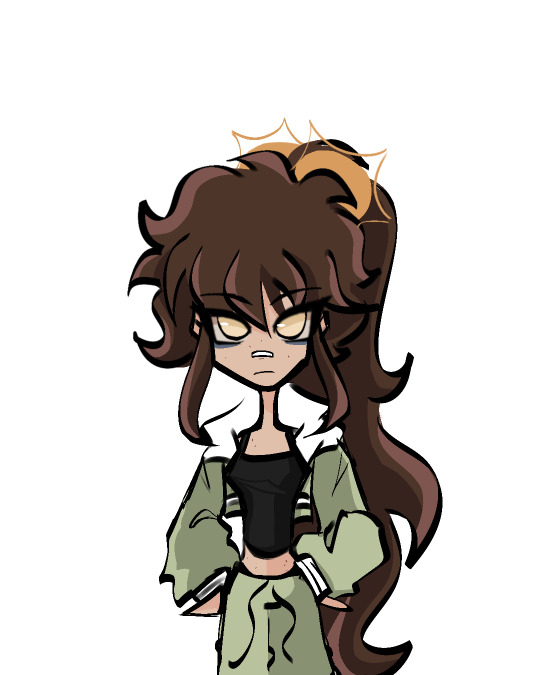
SPRITES??!??!? and theyre actually good too?? (don’t look at the old ones😰😰)
#channel 1537#1537 development#visual novel#indie creator#indie developer#indie vn#vn#original characters#art#ocs#artists on tumblr#original character#oc art#digital art#character design#writers on tumblr#marilynn 1537#channel 1537 marilynn#channel 1537 laura#laura 1537
8 notes
·
View notes
Text


Deadly Inferno {A Patrick Hockstetter Fic}
Part 2 - Hockstetter Kind Of Girl
Word Count: 1537
Warning: Mature Themes
I twirled my pencil between my fingers as absolutely no one was doing any sort of work. Today was the last day of school and well, it was a waste to even worry about school work. My Polaroid camera sat neatly on my desk, having been out most of the day taking random pictures of Bev and I smoking, Vic and I tormenting Henry. And my last picture for the last day of school, was a surprise photo of Patrick sitting behind me with his usual slouched demeanor, his eyes directly focused on me. I smirked at him before I turned around, the photo coming out as I shook it to help it develop. Before I could even place it in my bag, his hand twirled around my hair and yanked my head back so hard I thought he would snap my neck.
"What the fuck Hockstetter?!" His smirking face was the only thing I saw before he suddenly let me go, a portion of my hair lingering in his hand that he purposefully yanked out. He suddenly smelled it, his eyes practically rolling in the back of his head from the immense pleasure he felt course throughout his entire body. Finally, the bell had rung before anything else could be said, putting my camera away and the photo of Patrick I took in my bag I usually carried around with me. My cigarette pack was calling my name and I was ready to get out of here for the summer.
"Hey Leslie! Want to hang out later? I don't feel like being home honestly." Beverly Marsh was the best girl friend I've ever had. Smart, cunning, and always fun to be around, we had two dads that were the absolute worst. Except hers was a total creep. Mine was just an abusive asshole. So any chance we could get to stay far away from home, we took it.
"Duh. By the way, those pictures turned out great. Except I'm giving you the one where smoking is evident because I don't trust my dad to stay out of my bag." She laughed a little before taking the photo from my hand, placing it in her pocket for safe keeping. That's when she noticed the picture of Patrick firmly in the pile of photos, smirking a little in knowing. She loved teasing me about him.
"Hockstetter huh? I knew you were a Patrick kind of girl." She winked at me with a little smile in place as we walked down the hall, just as I saw them lingering in their usual spot against the wall where they can mock and laugh at people walking by. Patrick was being bold by showing his obvious intent with me by licking his lips and winking at me once we walked past. Henry simply eyed me with Beverly and it felt completely awkward. They did things together in the past, things that felt weird to even admit considering that's my brother and she's my best friend. He never lets her forget it either. Like me, she's considered a slut. Especially by Greta. She comes after both of us unfortunately. Except before I lit her hair on fire with a zippo lighter Patrick had given me for my cigarettes last year around my birthday. My dad was less than thrilled when the school called him about the incident, confiscating the zippo immediately once I got home. But I simply found it once he was black out drunk one night in his shirt pocket. He completely forgot about it. But I didn't forget the belt I got to my back over and over again. Patrick of course was proud that I even lit someone on fire.
"I guess I've decided I'm tired of being told what to do by Henry and my dad. They are on a mission to keep me away from Patrick. My dad doesn't even realize that I ride with them to school everyday. They hide me until we are out of the driveway. Same thing going back. But usually he's not home after school." Bang up job they're doing huh? I'm constantly around Patrick. Because I'm usually always with Henry. Henry wasn't always the way he is. He used to be different. Until mom left at least. Now he's a pompous asshole who bullies kids younger than him who can't really defend themselves against them. By them I mean his entire gang. Because usually he doesn't go at it alone. Sometimes.
"Don't worry about them, okay? I know it's hard to when they constantly threaten you. But you clearly like Patrick. Even if he is a creep...." I playfully slapped her arm as I drew a cigarette out of the pack from my bag and lit it up with the infamous zippo that nearly burned Greta alive, careful to see if any snitches were around that would report back to my dad. Thankfully, no one was. I inhaled on the cigarette in pure bliss, exhaling softly into the summer air, leaning against the school building.
"Yeah well.... I guess I'm fucked up then huh?" She did the same as I, not really caring if anyone saw, simply smiling at me. She never judged me. She just wanted me happy. We both wanted each other happy. But, not everything was sunshine and rainbows.
"Nice frisbee flamer!" I rolled my eyes and stubbed my cigarette out against the wall behind me before bolting towards the guys now heading towards the trans am, Patrick tormenting Stanley Uris as usual. Stanley is Jewish, and he always gets picked on for it. Honestly, they just pick on all of them to just do it.
"Patrick! Come on, don't bother that kid." Stanley had time to stand while I distracted Patrick, his attention solely on me now as he walked right towards me, his long legs taking long strides until he was directly in front of me.
"You're such a softie for these losers huh? Don't go getting all lovey dovey with them though. I wouldn't be too nice about it." I simply rolled my eyes, noting Beverly standing in place further away with a roll of her eyes before she waved at me, walking away towards the back of the school to our usual spot. A spot close to my house that no one knew about except for us. And well, Patrick. He found me there once because he was stalking me of course. I always go there when things at home are rough. Which is all the time.
"Oh Pat, how many times do I have to say you're it for me? Oh baby, oh baby." I softly nudged his arm as I went past him towards a now pissed off Henry of course picking on Bill Denbrough. Bill had been through a lot this past year, losing his brother Georgie. Georgie was a sweet kid. I used to babysit him, surprised the Denbrough's even trusted a Bowers around their kids. But I wasn't like my brother. And they seemed to be happy with that. They didn't seem to listen to rumors around town either. Thankfully. Otherwise they'd probably think I'd do something with Bill. The only interest I have, is Patrick. And I won't lie about it.
"Come on Henry. Leave him alone, alright?" Henry's eyes now engaged with mine and they were spitting fire. He roughly grabbed my arm, just as he noticed something behind me, already knowing it was dad from when I was walking away from Patrick. Dad was constantly patrolling the school because of the missing kids. He let go of me, but not before going past me and slapping a spit filled hand against Bill's cheek.
"Don't get in my way ever again Leslie. Or else." He simply stalked away as I glared after him, anger coursing through my veins. I mouthed a sorry to Bill and the others before I walked away towards the trans am, Patrick following closely behind.
"You know I'm sick of some scaredy cat bitch sticking up for a bunch of losers who all seem keen on getting in your pants. If they haven't already....." Henry's words actually stung a bit, but not long enough because once I climbed my way inside the trans am, I roughly slapped him against the head, igniting an all out war where he tried to grab for me, but Patrick pulled me onto his lap and held me all the way back against him, his arms holding me down firmly.
"Fucking asshole!" I went limp against Patrick, tears threatening to spill from my eyes. Of course Patrick's happy ass was digging into my shorts and I knew it wouldn't be long before someone did actually get into my pants. Patrick. Because I was tired of fighting to stay away from him in fear of what would happen. I shimmied across his crotch, knowing it would drive him absolutely insane, feeling him hardening even further, If that's even possible. I pretended it was an accident. But he knew I was toying with him, feeling his fingers toying with the hem of my shorts. He was losing his mind. I was playing a dangerous game. And I loved it.
#owen teague#patrick hockstetter#it#horror#bowers gang#henry bowers#victor criss#belch huggins#beverly marsh#stanley uris#bill denbrough#losers club
18 notes
·
View notes
Text
The Chanoyu Hyaku-shu [茶湯百首], Part I: Poem 1.

〽 Sono michi ni iran to omou kokoro koso, waga-mi nagara no shishō nari-kere
[其の道に入らんと思う心こそ、 我が身ながらの師匠なりけれ].
“If [I] decide [that I will] not¹ embark on the Way, that must depend on [my own] feelings. Isn’t it that my own body must be [the thing that] guides² [my decision]?”

The point of the poem is that the novice should never be forced into embarking on the study of chanoyu as a way to cultivate his samadhi³. Rather, he should come to that decision by himself, after carefully considering his own situation, in light of the dedication and sacrifices that such an approach will entail.
As with all of the cultural practices that developed from within religious disciplines⁴, when a desire to enter upon the Path arises (together with the concomitant energy which this desire engenders), it will form the foundation of one’s training. In the early days, the novice began his association with chanoyu by joining a tea group, and attending their regular gatherings -- usually for a period of at least several years -- before taking his first lesson. This allowed the beginner to become familiar with the details (and the possibilities) of chanoyu, and so make an informed decision regarding just how far he wished to enter into the thing.
There is absolutely nothing wrong with approaching chanoyu as a social activity, or because one enjoys the mood, or the food or kashi, or because of an interest in the utensils (whether as historical or art objects, or for monetary investment). But taking things to the next level, where one approaches chanoyu with an almost religious fervor, is something that demands a commitment that few will be able to make, if they are being honest. So it is better, at the beginning, to consider this issue carefully, to assess whether one is willing -- and (physically and mentally) capable -- of doing so before announcing the commitment to the group. This is what this poem is telling the beginner, and at the very moment when he is faced with the decision that will certainly impact his future in many, and unknowable, ways. Nevertheless, as it has been said, “it is at the very moment when the desire to enter the Way first arises that perfect enlightenment is already attained.”

It is interesting that this is the first poem in every collection of the Hundred Poems, and that all of the collections include the same version of this poem.
_________________________
¹Iran [入らん] means to not enter; to not embark on, or commit oneself to (a certain course of action).
Virtually all modern renderings change this negative into a positive -- “the heart that wants to enter the Way” or words to that effect. In Japanese poetry, this is possible if one uses a Heian period poetic conceit, where iran [入らん] is considered to be a contracted form of iramu [入らむ]. However, this approach to the poem seems to be a case of deciding what you want the poem to mean, and then searching for an obscure poetic device that will allow you to argue for that meaning.
We must remember that these poems are dōka [道歌], poems that were created to provide guidance to the beginner. And while, since Jōō, as the creator of the cha-kai*, drew many of his early disciples from among his acquaintances at the Shino family’s kō-kai [香會], as well as poetry gatherings hosted in the mansion of Sanjō-nishi no Sanetaka [三條西實隆; 1455 ~ 1537], we must also recall that the earliest manuscript of the Hundred Poems was written for Matsu-ya Hisamasa [松屋久政; 1521 ~ 1598], who was a young man (and, presumably, not highly trained in the subtleties of poetic diction). As a result, poems that require a considerable amount of mental gymnastics to be understood, as in this case, would seem especially out-of-place. Therefore, the more straightforward meaning -- that this poem is suggesting the possibility of a disinclination to enter the Way -- is surely what Jōō intended. ___________ *Jōō derived his cha-kai from the Shino family’s kō-kai by adopting the basic form of the kō-kai (which included the service of tea at the end of the gathering while poems composed during the naka-dachi were intoned and critiqued), and simply shifting the emphasis to the service of tea. (In its earliest version, Jōō still retained an abbreviated appreciation of incense, following Jōō’s sumi-temae; with this followed by a meal, as the Shino had always been doing things, and the naka-dachi: Jōō’s principal modification was that he included koicha, as well as usucha, during the goza, while discouraging unnecessary conversation.)
²While the word shishō [師匠] is usually translated teacher or master, it also means instruction, teaching, guidance -- and so refers to someone who guides another person.
Here, however, shishō is referring to your body, which must guide your decision. If you are physically (or emotionally) incapable of mustering or sustaining the self-discipline necessary to practice chanoyu, then it is better not to waste your own (or your teacher’s) time.
While this might strike us as extraordinary, we must remember that the approach to chanoyu taken during the sixteenth century was very different from what it is nowadays. During Jōō’s and Rikyū’s period, the aspiring chajin participated, as a middling guest*, until he was found (by the senior members of the group who acted as the buffer between the lower disciples and the master) to be completely familiar with everything that was done. Only then, if he wished to go on, was he invited to begin to learn the motions. As a result, the course of study could be completed in a matter of months once begun† -- rather than the years and decades required by the modern approach.
It was during those several years of observation that the beginner could decide whether chanoyu was “right” for him, or not -- and so plan his course accordingly. ___________ *That is, as one of the guests who had no real responsibilities during the gathering other than to pay attention, and follow the lead of the other guests. Thus he was there to observe, without the necessity of having to perform.
†This is due not only to the complications that are inherent in the machi-shū approach to chanoyu, but also are a consequence of many people embarking on their study of tea without ever having seen, let alone participated, in a gathering. It is this ignorance of the basics, and how they all fit together, that makes chanoyu as difficult to master as it is in the present.
³The utter foolishness of forcing anyone to study can be seen in what happened to chanoyu during the early 20th century, when hoards of young women were made to study in order to obtain a menjō (certificate) that would, in theory, help them marry above their status. The result was that, since they had little or no actual interest in chanoyu, every detail had to be laid out and specified (down to which utensils could be used, and in what combination), so that creativity and self-expression were no longer a consideration. This mindless and disinterested attention to detail is, of course, the antithesis of what chanoyu was all about, and would more likely hinder, rather than enhance, the practitioner’s quest for samadhi.
⁴As has been mentioned before in this blog, chanoyu evolved from within the practices associated with the Ikkō ichi-nen shū [一向一念宗], an Amidist sect that appears to trace its roots back to the Bulgug-sa [佛國寺] in Kyeongju [경주, 慶州], Korea.
Not only chanoyu, but all of the “zen-inspired” arts -- including incense appreciation*, flower arrangement, nō [能] and bonbai [梵唄] (Buddhist chant, in Korean beompae [범패] -- where it was often coupled with chanoyu and za-zen as part of the threefold approach to the cultivation of samadhi that was favored by the Amidist sects), and so forth. We must remember that, in pre-modern times, there was no real idea that one approach (such as za-zen) was the exclusive purview of a certain sect of Buddhism. Rather, monks freely borrowed from the techniques favored by this or that school of Buddhism, since the ultimate goal was always the cultivation of samadhi. ___________ *Not the “guessing games” competitions, in which the object was to demonstrate one’s olfactory prowess (like most of the “authentic” Japanese versions of these activities -- like the earlier tō-cha [鬪茶] gatherings -- were a form of gambling, and so antithetical to the idea of Buddhist training). This competitive form of incense was exclusively Japanese, and had existed since the Heian period. Unfortunately, even the Shino school became corrupted in this way once the headship passed into the hands of their Japanese disciples, from 1571, following the death of the last of the original Korean line.
==============================================
◎ If these translations are valuable to you, please consider donating to support this work. Donations from the readers are the only source of income for the translator. Please use the following link:
https://PayPal.Me/chanoyutowa
2 notes
·
View notes
Text
When it came to the making and promulgation of policy, however, Oxford was far less important than his friend and associate, Thomas Cromwell, who was the King’s secretary in 1535, was appointed Lord Privy Seal the following year, and is usually reckoned to have been the motivating force in the development of drama in support of crown policy in this decade. However, all available evidence suggests that he only began work on this project more than a year later. It seems to have been the Pilgrimage of Grace in the autumn of 1536 that demonstrated the need for a systematic propaganda exercise to counter the dangerous persistence of Catholic sentiment in England. Around this time, Richard Morison, a relatively new member of Cromwell’s secretariat, sent the King a paper critical of the ‘lewdness and ribaldry’ of the Robin Hood plays commonly acted on holy days, and proposed an alternative: ‘How much better is it that those plays should be forbidden and deleted and others devised to set forth and declare lively before the people’s eyes the abomination and wickedness of the Bishop of Rome, monks, friars, nuns, and such like.’ Cromwell himself then took the idea forward in 1537, seeking out suitable playwrights and paying acting companies through his own household account. By 1539, as one scandalized French diplomat saw it, there was ‘not a village feast nor pastime anywhere in which there is not something inserted in derision of the Holy Father’.
1535: A Midsummer Night’s Apocalypse, Martin Wiggins
#anti papalism#henrician#thomas cromwell#martin wiggins#cancelling robinhood? how's that for mantelite cromwell <3
3 notes
·
View notes